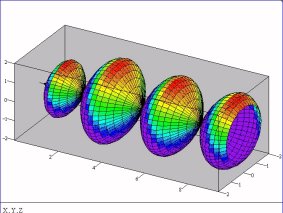
Introduction
It is observed that the sun pulses every 160 minutes. Scientists have studied this phenomenon since its discovery in 1962 by a group at Cal Tech headed by Robert Leighton. What are these solar pulses, what causes them, and what do they mean to us on earth?
The answers to these, and many other questions, lie in revolutionary discoveries by Howard Lawrence Schriefer in pursuit of a Unified Theory of the universe.
Evidence
Reportedly from astronomical observations, every 160 minutes, the surface of the sun pulses at a speed of 4mph in and out to alter the solar diameter by 6 miles. Other secondary solar pulses are also observed. These solar pulses are not the same as the much publicized solar flare which occurs during a geomagnetic storm.

Logic
The cyclic solar emissions transmitted from the sun to earth would cause the most prominent solar pulse observed on earth. Secondary solar pulses may be solar emissions directed to other receivers in space. With this in mind, we apply simple calculus for the change of spherical volume with respect to spherical radius to determine the thickness of each spherical shell volume reduction upon a complete instance of solar emission. The Schriefer Unified Theory provides for a pulse envelope of exact size and shape associated with a given sphere, viz., the sun. Successive pulse envelopes formed by the combining emission shells join in a series chain, not unlike the adjacent illustration, for transmission from the sun to and reception by earth.
The computations for this solar pulse case are based upon natural transmission/reception, using the solar diameter, distance between earth and sun centers, and kinematics of the sun and earth. The unified theory pulse computations result in a period of 162.2 minutes, a solar diameter change of 6 miles, at a rate of 4.44mph. In addition to the above results, a solar cycle of 22.95 years is also computed.
Conclusion
The close agreement between actual scientific observations of the 160 minute solar pulse and computed values based upon the Schriefer Unified Theory indicate that the solar pulses are a natural phenomenon dependent upon the relative locations and kinematics of the earth and sun in three dimensional space.
The same solar pulse computations can be performed for other planets in the solar system to predict the primary solar pulse properties observable at those respective planets.
From Library Journal
With the Sun about halfway through its 23rd sunspot cycle since the 18th
century, there is a chance that solar flares and coronal mass ejections
(giant bubbles of hot gas erupting from the Sun) will affect the Earth's
atmosphere and magnetic field during the next few years. Though the
effects might be limited to relatively benign auroras in remote regions,
there is a small probability that sufficiently powerful solar outbursts
could permanently disable communications satellites and black out...
Book Description
The Encyclopedia of the Solar System provides a series of
comprehensive and authoritative articles written by more than 50 eminent
planetary and space scientists. Each chapter is self-contained yet linked
by cross-references to other related chapters. This beautifully designed
book is a must for the library of professional astronomers and amateur
star-gazers alike, in fact for anyone who wishes to understand the nature
of our solar system.
